| OUTLINE OF THE BOOK |
|
| 13. People’s Songs and People’s Music |
In 1946 People’s Songs was created in the US. While its Canadian
branch was small, it had a profound impact on left-wing youth and the
development of a new alternative musical culture. Through its bulletin,
recordings, and the work of “People’s Artists” such as The Weavers,
Paul Robeson, Woody Guthrie, Burl Ives, Earl Robinson and others, Peoples Songs helped spark the emergence of the Canadian “revival”. |
 Robeson at the Peace Arch - 40,000 people attended Canada's largest
folk music concert ever Robeson at the Peace Arch - 40,000 people attended Canada's largest
folk music concert ever |
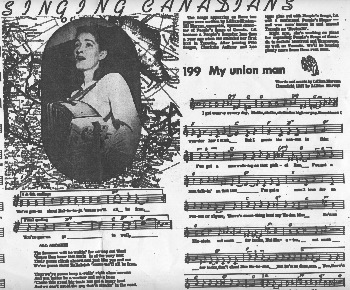 Photo and write up on Hootin’ Lil Marcus along with music and lyrics for her song, My Union Man, in People’s Songs Magazine, Volume 2, Number 10, November 1947 Photo and write up on Hootin’ Lil Marcus along with music and lyrics for her song, My Union Man, in People’s Songs Magazine, Volume 2, Number 10, November 1947 |
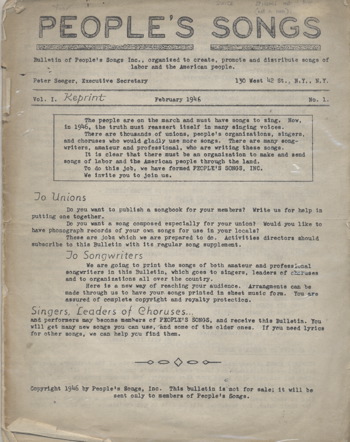 1st edition of People’s Songs Magazine, February 1946 1st edition of People’s Songs Magazine, February 1946 |
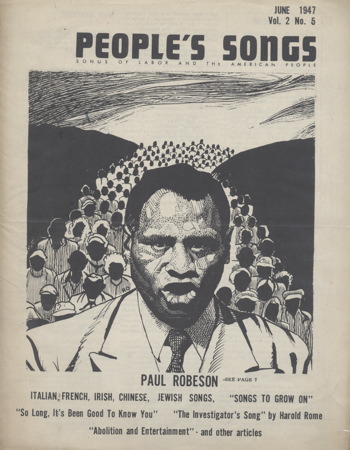 Cover of People’s Songs Magazine featuring Paul Robeson, Volume 2, Number 5, June 1947 Cover of People’s Songs Magazine featuring Paul Robeson, Volume 2, Number 5, June 1947 |
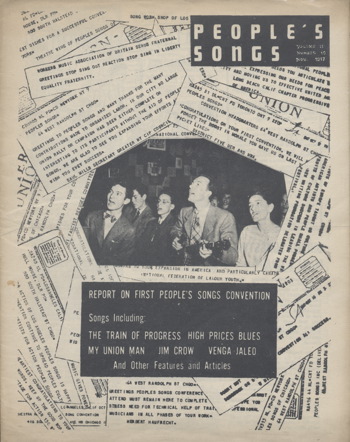 Cover of People’s Songs Magazine featuring Lil Marcus and Pete Seeger, Volume 2, Number 10, November 1947 Cover of People’s Songs Magazine featuring Lil Marcus and Pete Seeger, Volume 2, Number 10, November 1947 |
 Cover of Sing Out Magazine featuring Woody Guthrie, Volume 7, Number 2, Summer 1957 Cover of Sing Out Magazine featuring Woody Guthrie, Volume 7, Number 2, Summer 1957 |
 Cover of Sing Out Magazine featuring Pete Seeger’s The Hammer Song, Volume 1, Number 1, May 1950 Cover of Sing Out Magazine featuring Pete Seeger’s The Hammer Song, Volume 1, Number 1, May 1950 |
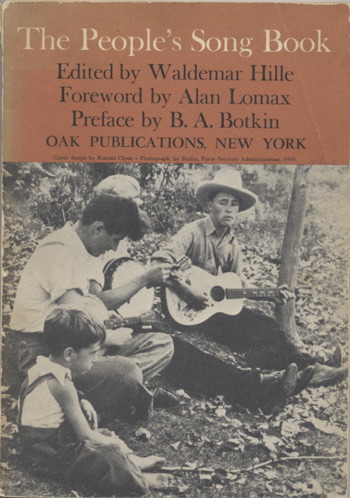 Cover of the book, The People’s Song Book, edited by Waldemar Hille, (New York: Oak Publications, 1948) Cover of the book, The People’s Song Book, edited by Waldemar Hille, (New York: Oak Publications, 1948) |
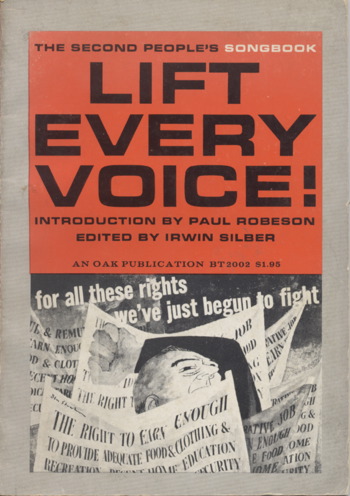 Cover of the book, Lift Every Voice: The Second People’s Songbook, edited by Irwin Silber, (New York: Oak Publications, 1953) Cover of the book, Lift Every Voice: The Second People’s Songbook, edited by Irwin Silber, (New York: Oak Publications, 1953) |
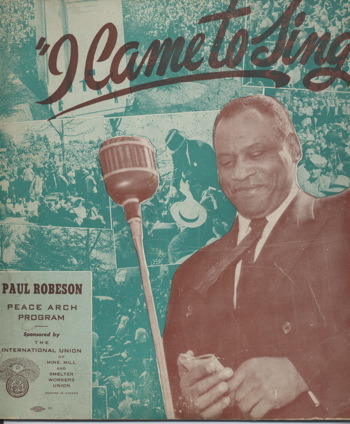 Album cover of I Came to Sing: Paul Robeson’s Peach Arch Program sponsored by the International Union of Mine, Mill and Smelter Workers Album cover of I Came to Sing: Paul Robeson’s Peach Arch Program sponsored by the International Union of Mine, Mill and Smelter Workers |
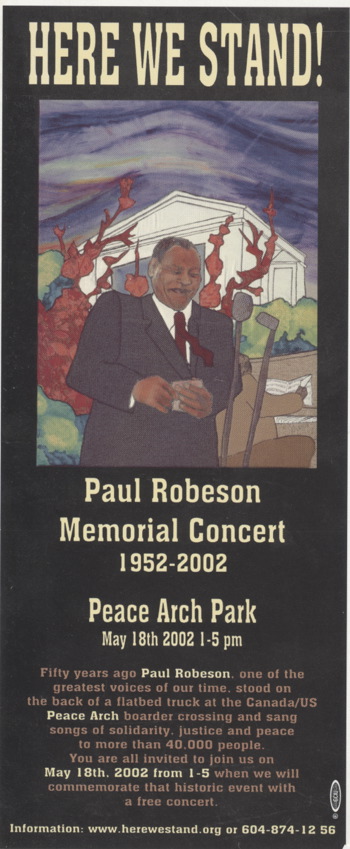 Promotional pamphlet for the 50th anniversary Paul Robeson Memorial Concert held in Peace Arch Park on May 18, 2002 Promotional pamphlet for the 50th anniversary Paul Robeson Memorial Concert held in Peace Arch Park on May 18, 2002 |